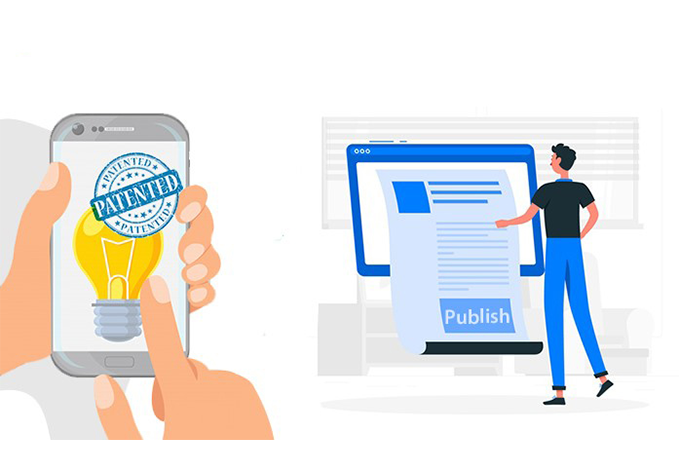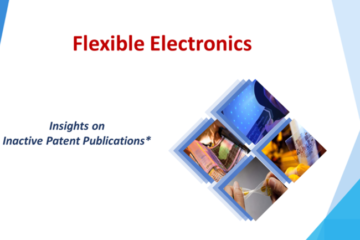The Academic Dilemma – Publish First or Patent First?

Patent applications and publications are the two ways to bring technical and scientific knowledge to the public.
Publishing a research work is as important as carrying out a research. It is a great way to broadcast the remarkable work of a researcher to the world and also adds value to one’s academic career.
Another profitable way to express the idea / research work and share them with rest of the world is by way of Intellectual Property Rights and specifically Patents.
One of the concerns people, working or studying in universities and research establishments, have is whether they should publish first the invention / technology that they have developed or whether they file a patent first.
This, “publish or patent” debate has been there for a long time and there are many strategies in understanding whether the work of a researcher should first be published or whether it should be patented before publishing.
In this connection, let us first understand a few general aspects about a Publication and a Patent
What is a Publication?
Publication is disclosing an invention, a project or study as a complete disclosure to the public through a scientific journal. Such a knowledge shared is open to everyone and hence others can make use of, modify and create one’s work based on this publication.
It provides a recognition to the inventor in the area of research. Moreover, publication helps in exchanging ideas with researchers around the world. In general, scientific publications are subject to copyright protection, which arises automatically from the moment of their creation.
What is a Patent?
A patent is a form of an intellectual property that is granted by the government to the inventor(s), giving the inventor(s) the right to exclude others from making, using, selling and importing an invention for a limited period of years (generally 20 years) within a particular territory, in exchange for making the invention known to the rest of the world.
Why is Patent protection so important?
In an urge to publish their inventions or research work, most of the inventors forget the fact that a publication before a patent would prevent them from getting a patent later.
A patent is important because it prevent others from using your invention. In addition, a patent would provide an income if you license or sell the rights. Without patent rights, it is not possible to prevent others from copying or using your invention.
Just like a bicycle lock that protects your bicycle from theft – Patent protects your inventions against theft.
Benefits of obtaining a Patent
- The patent provides an applicant with exclusive rights to exclude others / competitors from using, selling and exploiting the patented invention for a certain period of time (usually, twenty years from the date of filing of the patent application)
- Returns on investments is higher for a patented product when compared to a non-patented product because for in the process of getting a patent we make sure everything falls in its place
- Opportunity for selling or licensing the invention: As patent is an exclusive right it will give an opportunity to sell the invention when the applicant chooses not to use or manufacture the patented invention by himself or herself. Thus, it will commercially benefit the applicants and give higher negotiating power for the patented products
Publish first or Patent first – The Academic Dilemma
Let us understand this through an example.
There were two persons who were pursuing their doctorate degrees and having their own specific area of research work. They wish to publish their research work globally and also both want to patent their ideas. But they have a dilemma whether to Publish first or Patent first.
What happens if you Publish first?
Person A chooses to publish his invention as a paper in a well-known scientific journal, which is approved and recognized in the academic world. Later after some months or years, A approaches the patent office and starts the patenting process.
Before A comes to understand that the invention published in journals can be patentable only in some countries and within a specified grace period as per the patent office or else the published invention cannot be patented, it was too late. Hence, A couldn’t obtain a patent for his or her invention.
What happens if you Patent first?
Person B chooses to patent his / her invention and thought it is worthwhile to commercialize the idea.
B files a provisional (temporary) application for the invention in the patent office and got a 12 month timeline for filing the complete disclosure. Then B decides to publish the idea or research as a paper in a technology journal. Also the provisional application gives B a first priority to patent by date (date of provisional application).
Within 12 months period, B also files a complete specification which gets published as a patent application. Subsequently, after due examination by patent office his / her invention gets granted as a patent.
Then B approaches a business organization to manufacture and commercialize the invention with a written agreement. The business organization accepts the deal and sells the product worldwide and shares a percentage of the profit with him.
Beneficially, B’s patent application is also considered as a scientific publication.
In broad view, both the research publications and patents carry the same importance when it comes to disclosing our ideas.
Publishing a research work in a scientific journal is highly essential for academic community but there is no legal protection for their work. Whereas, by filing patents, one-hundred percent protection is guaranteed to the inventors. In terms of business value, patent has better commercialization opportunities compared with ideas published in research journals.
Quick comparison – Patent vs Publication
| Criteria | Patent | Publication |
| Focus | Making commercial and business sense out of inventions | Get peer recognition and academic recognition for your scientific advancements |
| Requirement | Meet patentability criteria: Usefulness, Novelty & Non-obviousness(and of course do not fall under non-patentable subject matter according to the patent office) | Detailed research work that is unique and novel |
| Coverage | Jurisdiction that is country specific | Common and accessible worldwide |
| Time taken to publish | Depends on specific country’s patent law(Approximately from 18 months to 33 months from filing date, also early publication i.e within a month is possible in few countries ) | At least it takes three months to publish in an official journal |
| Protection | Patent protects your invention from others using, making or commercializing your invention | Not a protected, anyone can make, use, modify and commercialize |
| Protection period | 20 years of protection in general; depends on country | No protection |
| Cost | It depends on various factors like specific patent office fees and professional fees involved.Also there are many concession for students, individual inventors and academicians in some countries when applying for a patent | Depends on the publishing platform and content of the research work |
| How to publish | Directly apply to the country’s Patent Office or through official Patent Office website or by taking help of an attorney or a patent agent | Directly apply to the scientific journals of your interest |
Patent first makes sense.
You can always publish a research work for which you have applied for a patent.
On the other hand, if you have already published your research or invention, it is made known to the public via a scientific journal. Patent office may refuse to issue a patent on the premise that the invention is already in the public domain. Hence patenting first makes sense.
Given the fact that almost all of the scientific research done in academic institutions today has a commercial and business angle, it makes sense to patent your invention – at least provisionally – before you publish your work.
If you have more questions, please contact patent experts at DexPatent for answers.













